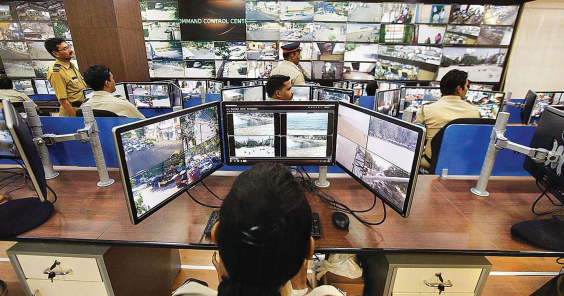Cybercrimes know no borders and have evolved alongside emerging digital technologies. Each year, the number of reported cybercrimes in India continues to rise significantly, and the situation is worsening, says Ivor Vaz.
On a positive note, a vibrant India is on the brink of a digital revolution. Once primarily an agricultural nation, India is undergoing a dramatic transformation driven by the rapid advancement of digital technology and infrastructure. Economists predict that India’s digital economy will exceed US$1 trillion by 2027-28, with a robust annual growth rate of 2.8%. This growth is largely attributed to the exponential rise of digitalisation and data-driven innovation, which are fundamental to modern progress.
In recent years, India has emerged as a significant player in technology and services, transforming the global economy. With a wealth of talent and a thriving IT sector, India has become a hub for innovative ideas, software development, and outsourced business services. The country’s role in the global services landscape has evolved remarkably, establishing it as a centre of excellence and innovation, reflecting its abundant talent, technological capabilities, and business-friendly environment.
However, amidst this rapid digital growth, fueled by advancements in AI, automation, and data-driven technologies, a critical challenge emerges. While increased connectivity and a digital economy promise significant progress, they also expose our digital societies to new vulnerabilities. India has only just begun to develop a cybersecurity framework to protect its vast internet population—the second largest in the world. At the same time, cybercrimes continue to evolve at a pace that matches or surpasses emerging technologies.
Each year, the number of reported cybercrimes continues to rise significantly. In India, the most common type of cybercrime is financial fraud. Over the past few years, financial fraud has become a growing concern, with losses amounting to billions of Indian rupees annually. Between 2020 and 2024, these cases accounted for 75% of all cybercrimes in India, peaking at over 77%.
The increase in reported cases from 2019 to 2024 is striking with 26,049 complaints recorded in 2019, followed by 2,57,777 in 2020, 4,52,414 in 2021, 966,790 in 2022, 15,56,218 in 2023, and 7,40,957 in just the first four months of 2024.
The sectors most vulnerable to cybercrime include IT, healthcare, manufacturing, and finance. Small businesses are also frequent targets, especially since only 41% of Indian companies were at progressive stages of cybersecurity readiness in 2024.
Even though the private sector is heavily affected by online crime, government agencies have also faced incidents of espionage. A notable breach involved India’s unique citizen identification system, the Aadhaar Card, which compromised extensive personal information, including bank details, addresses, and biometrics of over a billion Indians. In 2024, the cost of data breaches in the country surged by more than $2 billion.
One of the major challenges in combating cybercrime in India is the lack of awareness regarding cyber hygiene. Even when crimes are reported to authorities, the existing infrastructure and processes for addressing such cases are largely inefficient. In 2018, India’s Ministry of Home Affairs established the Indian Cyber Crime Coordination Centre (I4C) to provide a framework for combating cybercrime. The Central Government further launched the National Cybercrime Reporting Portal (NCRP) under the I4C in 2019. Additionally, the government has implemented a stringent content regulation policy for the internet and social media platforms. Another area that could help reduce cybercrime numbers is the expansion of the cybersecurity market. Increased investments in this sector can combat the growing threats likely to persist as the world navigates hyper-connectivity and the era of artificial intelligence.






